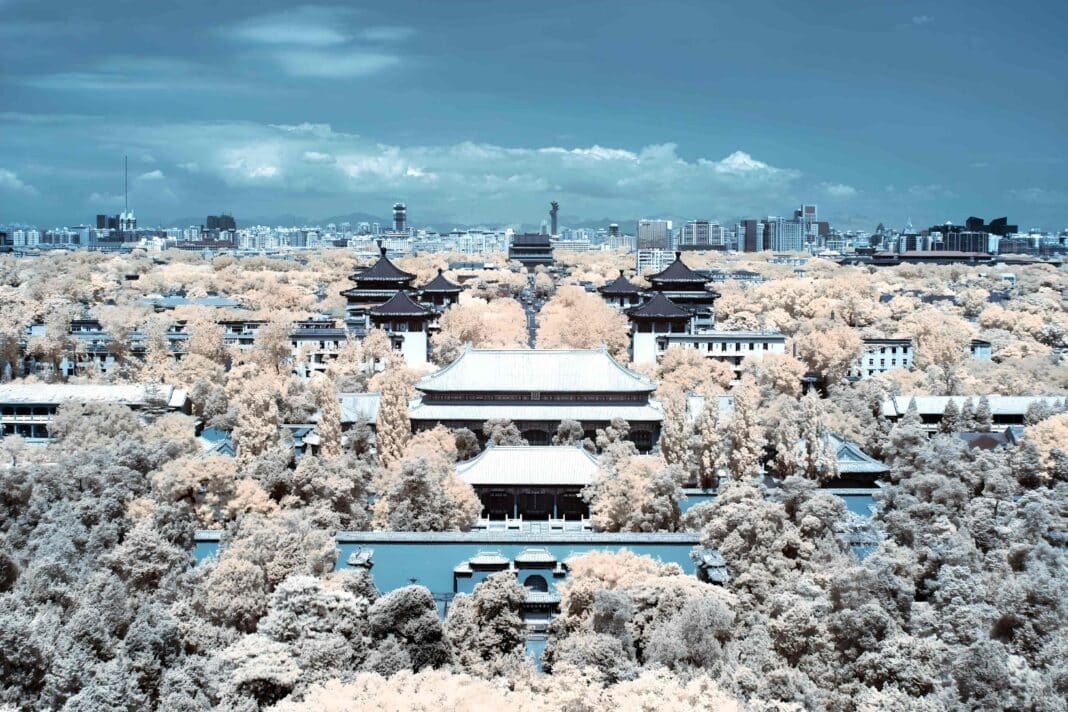Beijing has been crowned China’s latest “National Forestry City”, with the city now one of the world’s “greenest” capitals after lifting forest cover from 38.6% to (at least) 44.9% over the past decade.
That is, according to the Chinese government, which, according to the World Economic Forum, now has a unique opportunity to tackle deforestation and drive reforestation.
Already, China has set ambitious targets – and in 2022, outlined a plan to lift forest cover to over 24% of its massive land mass by 2025 and conserve 70 billion trees by the end of 2030 to restore its ancient forests and finally build its famed “Great Green Wall.”
For over 10,000 years, China has been a hotbed for deforestation, land clearing and agricultural conversion – which has had significant implications for global ecological development.
Home to the world’s most population-dense forests, the vast majority of tree cover occurs on lands highly suitable for agriculture, a perfect storm that saw China lose 57% of its ancient forests, more than any other over the past 10,000 years.
And of those that remained, “most of China’s tree cover only exists on sloping lands (1–10°), with as much as 90% of original tree cover on flat services may have been lost.”
By 1949, the country’s forest cover stood at just 8.6% (and perhaps as low as 5%) – with China ranking 120 out of 160-plus countries for forest cover.
Today, China is the world’s most “reforested country,” and aided by international expertise and private funding, it now invests billions into doubling and now tripling its forest cover through tree planting, critical environmental policies and increasingly economic policies centred around carbon capture, storage, and renewable energies.
To this end, China is now the most powerful driver behind the push to reforest the earth and is the primary driver of positive afforestation and reforestation in Central and East Asia.
The fruits of the labour are all too evident in Bejing – where tree-planting plays a crucial role in screening the city from sands blowing in from the Gobi, an 800,000 square-kilometre expanse that would coat Tiananmen Square in dust nearly every spring.
Starting in the early 1990s, China has, in many ways, spearheaded the push towards embracing “Urban Forestry” with its “National Garden City program – awarded to Beijing yesterday.
While most international urban forestry programs focus on small- or medium-sized afforestation and reforestation initiatives, China has focused instead on large-scale tree-planting programs delivered at rapid speed.
This includes One Million-Mu, where Beijing, over six years, has successfully planted more than 100 million new trees – and raised its forest cover by more than 6% at breakneck speed.
Today, Beijing’s green space per capita is similar to cities like Denver and greater than New York. It could become even greener, as China’s most recent Five-Year Plan calls for further increases in city green spaces nationwide.
“Since 2001,” the New York Times notes, “China has nearly quintupled the acreage of public green space in its cities, according to data from the country’s Ministry of Housing, Urban and Rural Development.”
Lessons from the “Great Green Wall” policy?
Launched in 1978 to protect the north, north-west, and north-east, three regions affected by sandstorms sweeping out of the Gobi Desert, the so-called Three-North Shelter Forest Program aimed to grow 35 million hectares of new trees – a forest the size of Germany – across the country’s north by 2050.
In the ensuing four decades, planting trees became one of both the private and public sectors’ favourite climate change solutions. That makes the fate of China’s sprawling man-made forests a key early indicator of how the other projects may fare.
Problems from the start beset the program because of poor planning, the unrealistic demands of local party cadres, and a poor understanding of how and where a forest can successfully grow.
“We were told of the importance of planting trees at a very young age,” Sun Jing, director of the Alashan Foundation, a Chinese charity that combats desertification, told Bloomberg in 2021. “The idea that more trees equals good is never challenged.”
However, the mass tree planting has positively impacted China’s carbon emissions. As the world’s largest emitter, China has an obligation to address its damaging practices – and many officials believe that the afforestation it has undertaken is doing just that.
The substantial increase in forest coverage is acting as an effective ‘carbon sink’, whereby the area is absorbing more carbon than it emits.






